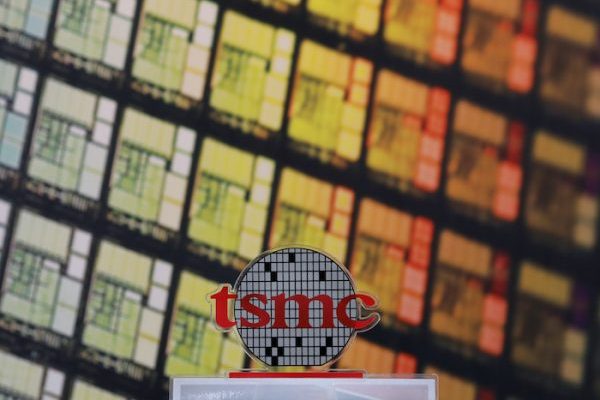China’s power is rising, but so is Taiwan’s. One company, the Taiwan Semiconductor Manufacturing Company (TSMC), holds 50 per cent of the world market share in contract chip-making. The technologies that will usher in the so-called Fourth Industrial Revolution, from 5G smartphones to autonomous vehicles and high-performance computers, will need the chips that TSMC manufactures.
That has made the United States worried about what would happen if Taiwan were to fall under Chinese control. TSMC has responded to US concerns by agreeing to build a fabrication plant in Arizona for its cutting-edge five-nanometre process. But by the time the it starts production in 2024, five nanometres won’t be cutting-edge anymore. TSMC has already developed a three-nanometre process that is expected to start production this year. Apple is the first customer in line and many others are waiting.
Given how US companies and the US military depend on TSMC, it is natural for the United States to worry about the security of its microelectronics supply chains. What if the chips that go into 5G phones, cloud computing servers and autonomous vehicles and weapons are manufactured by a Taiwan that has been forcefully integrated into China?
While this scenario is alarming, it also holds the key to long-term US strategy in the Taiwan Strait. US dependence on Taiwan is not a strategic liability — it is a strategic asset.
Geoeconomic trends will enhance deterrence in the Taiwan Strait. As is well known, the United States has a long-standing policy of maintaining ‘strategic ambiguity’, declining to clearly state whether it would intervene in Taiwan’s defence in the event of a Chinese attack.
Criticism of this policy has grown, but strategic clarity has its own risks: an unambiguous commitment to Taiwan’s defence would be interpreted by Beijing as a sign of eventual US support for Taiwan’s independence while also encouraging future Taiwanese governments to adopt provocative policies.
Beijing may not be eager for a war, but Beijing is not bluffing. Geoeconomic trends will enhance deterrence by raising the likelihood of US intervention in Taiwan’s defence without introducing the risks associated with strategic clarity. They will send a clear signal to Beijing without changing the status quo.
Critics may claim that any factor raising the likelihood of US intervention would introduce the same risks that a policy of strategic clarity would. But would China look at US dependence on TSMC and interpret it as a sign that the United States would eventually support Taiwan’s independence? Would a future Taiwanese government look at US dependence on TSMC and infer that the United States would give it cover for pushing the envelope on independence? The United States is already dependent on TSMC, and neither of those scenarios has unfolded.
Geoeconomic trends do not require the United States to adopt a new Taiwan policy. There is no need for the United States to announce a new strategic posture or a new position on Taiwan’s political status. The United States can simply maintain the one-China policy that it has maintained for decades and allow markets to do the work that political statements cannot.
There is evidence that US policy is already moving in this direction. Taiwanese Minister without Portfolio John Deng recently expressed optimism about the prospects for an eventual US–Taiwan free trade agreement.
Earlier in February, the United States and Taiwan held their first bilateral economic dialogue under the Biden administration, during which the two sides discussed Taiwan’s role in global supply chains amid a dire shortage in high-end chips for the auto industry. These developments are consistent with the one-China policy, because it is flexible enough to allow the United States to adapt to new conditions and new opportunities.
TSMC is not the only major semiconductor company in Taiwan. MediaTek, the United Microelectronics Corporation, and a whole host of other firms have secured Taiwan’s place at the centre of the semiconductor industry. And Taiwan is competitive in other high-tech industries as well: Google, Amazon and Microsoft have all announced plans to invest in Taiwan.
In her second inaugural address, Taiwanese President Tsai Ing-wen identified six core strategic industries as priorities for her government ‘to secure a central role in global supply chains, and make Taiwan a major base for the development of next generation technologies’. These industries include information technology and the digital economy, cybersecurity, healthcare, green and renewable energy, the defence industrial base and strategic stockpiles.
Taiwan’s National Development Council has placed these industries at the centre of its 2021–2024 National Development Plan. Taiwan is betting on geoeconomics as the key to its future — the United States should do the same.














